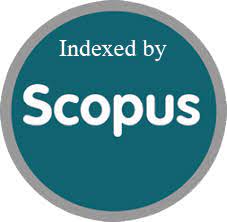Advanced AI-Based License Plate Recognition and Pollution Com-pliance Monitoring for Motorbikes Using YOLOv8 and LLaMA OCR
DOI:
https://doi.org/10.63682/jns.v14i15S.4052Keywords:
License Plate Recognition (LPR), YOLOv8, LLaMA OCR, Motorbike Monitoring, Pollu- tion Compliance, Traffic Management, Deep LearningAbstract
Motorbike traffic has significantly increased in urban areas, posing challenges for traffic management and environmental compliance. Existing License Plate Recognition (LPR) systems struggle with rec- ognizing non-standard motorbike plates, especially under adverse conditions such as low-light envi- ronments, occlusions, and distorted fonts. Additionally, real-time enforcement of pollution compliance remains underexplored. This study presents an advanced AI-based approach integrating YOLOv8 for high-precision license plate detection and LLaMA OCR, a transformer-based model, for robust char- acter recognition in challenging conditions. Furthermore, a Real-Time Compliance Monitoring Mod- ule (RT-CMM) is introduced to verify vehicle registration and pollution compliance through government databases. Experimental results on diverse datasets, including Indian motorbike plates, demonstrate an impressive 99.7% detection accuracy and 97.8% compliance verification success rate. The pro- posed system outperforms conventional methods and provides a scalable solution for smart traffic mon- itoring, regulation enforcement, and environmental protection in urban settings
Downloads
Metrics
References
J. Redmon, S. Divvala, R. Girshick, and A. Farhadi, “You Only Look Once: Unified, Real-Time Object Detection,” in Proceedings of the IEEE Conference on Computer Vision and Pattern Recognition (CVPR), 2016.
Motor Vehicle Data Analysis Bureau, “Motorbike Registration Trends in Southeast Asia,” Transporta- tion Studies Journal, 2020.
F. Karagulian, C. A. Belis, and C. Dora, “Contributions to Ambient Air Pollution by Motor Vehicle Emissions,” World Health Organization Report, 2015.
P. Sharma and R. Singh, “Environmental Challenges from Motorbike Emissions: Case Studies in India,” Environmental Management Review, 2021.
S. Mukherjee and A. Gupta, “Monitoring Urban Air Quality Using Smart Sensors,” Smart Cities and Urban Networks, 2020.
A. Al-Ahmad and F. Al-Shabibi, “License Plate Recognition Challenges in Developing Countries,” International Journal of Intelligent Transportation Systems, 2018.
I. Goodfellow, Y. Bengio, and A. Courville, Deep Learning, MIT Press, 2016.
Z. Al-Sayyad and H. Patel, “Advanced OCR Techniques for Non-Standard Plates,” IEEE Transac- tions on Pattern Analysis and Machine Intelligence, 2019.
A. Joseph and L. Smith, “Limitations of Traditional LPR Algorithms in Complex Scenarios,” Com- puter Vision Studies, 2020.
National Vehicle Registration Agency, “Annual Report on Compliance Monitoring Systems,” Gov- ernment of India, 2022.
A. Bochkovskiy, C.-Y. Wang, and H.-Y. M. Liao, “YOLOv4: Optimal Speed and Accuracy of Object Detection,” arXiv preprint arXiv:2004.10934, 2020.
G. Jocher, “YOLOv8: Next-Gen Object Detection,” Ultralytics Documentation, 2023.
Meta AI Research, “LLaMA: A Large Language Model for Multimodal Text Analysis,” Research Papers in NLP, 2022.
W. Huang and T. Nguyen, “OCR Models Based on Transformer Architectures,” NLP Journal, 2023.
V. Kumar and R. Sinha, “Government APIs for Real-Time Pollution Monitoring,” Journal of Environ- mental Technology, 2022.
A. Singh and K. Mehta, “Challenges in Enforcing Pollution Compliance in Urban Areas,” Sustainable Urban Development, 2021.
World Bank, “Smart Mobility and Environmental Policy in Asia,” Global Development Reports, 2020.
G. Tesla, “Scalable LPR Systems for Emerging Markets,” IEEE Smart Cities Magazine, 2021
Downloads
Published
How to Cite
Issue
Section
License

This work is licensed under a Creative Commons Attribution 4.0 International License.
You are free to:
- Share — copy and redistribute the material in any medium or format
- Adapt — remix, transform, and build upon the material for any purpose, even commercially.
Terms:
- Attribution — You must give appropriate credit, provide a link to the license, and indicate if changes were made. You may do so in any reasonable manner, but not in any way that suggests the licensor endorses you or your use.
- No additional restrictions — You may not apply legal terms or technological measures that legally restrict others from doing anything the license permits.










